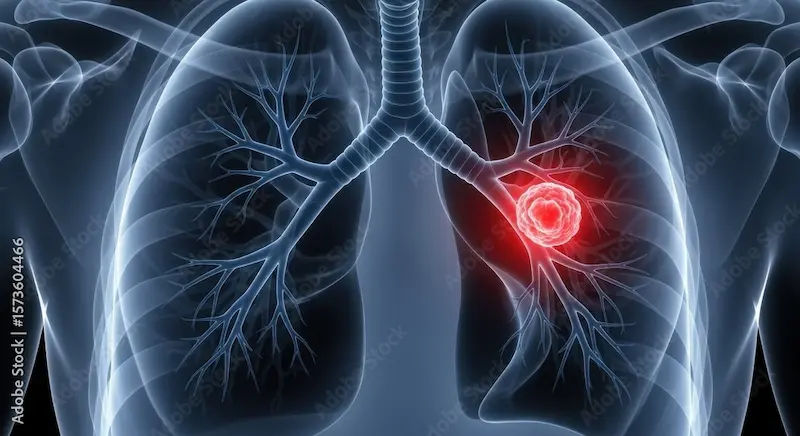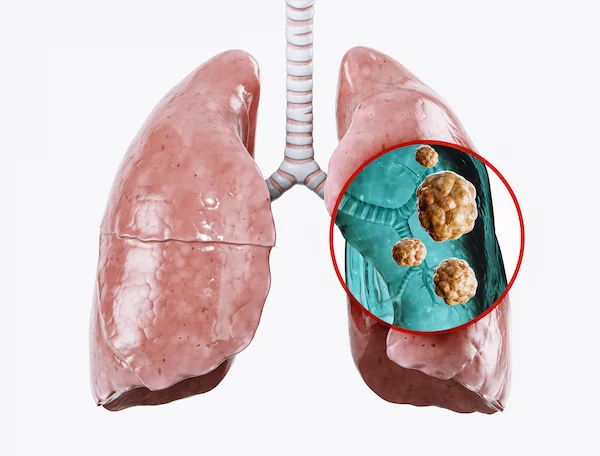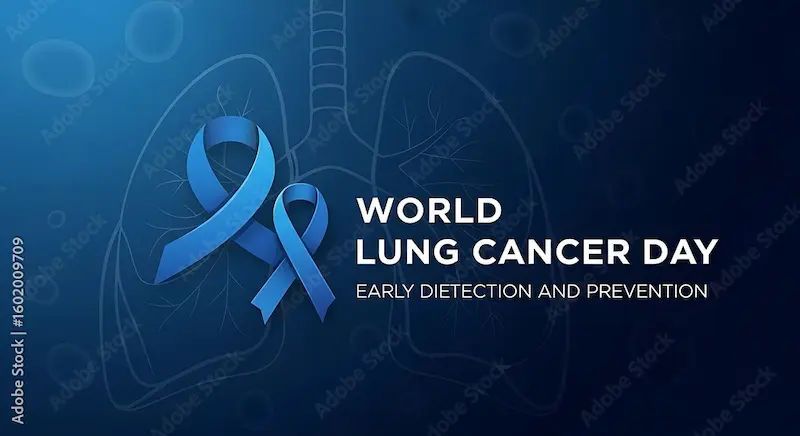Lung Cancer Signs, Causes, Tests, and Treatment
Learn about lung cancer, including its causes, early signs, key diagnostic tests, treatment options, screening, and prevention strategies for better outcomes.
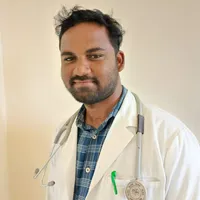

ntroduction
Lung cancer remains one of the most serious health concerns worldwide, but earlier detection and newer treatments are helping more people live longer, better lives. If you or a loved one are worried about lung cancer, this practical guide explains what leads to lung cancer, the early signs to watch for, the most important tests, and today’s treatment options—all in clear language. We will walk you through risk factors such as smoking, radon, and workplace exposures; common and subtle symptoms; how doctors use imaging and biopsy tests to make a diagnosis; and how treatments such as surgery, radiation, chemotherapy, targeted therapy, and immunotherapy are chosen. You will also learn who should get low-dose CT lung screening, how to navigate appointments and costs, and how to support recovery and quality of life. If symptoms persist beyond two weeks, consult a doctor online with Apollo24|7 for further evaluation. Early attention can make a real difference.
What is Lung Cancer?
Here's an overview:
Lung cancer starts when abnormal cells in the lung grow out of control. The two main types behave and respond to treatment differently:
• Non–small cell lung cancer (NSCLC): About 80–85% of cases. Subtypes include adenocarcinoma, squamous cell carcinoma, and large cell carcinoma. Many NSCLCs have “driver” mutations or high PD-L1 expression that can be targeted by specific drugs.
• Small cell lung cancer (SCLC): About 10–15% of cases. Tends to grow and spread faster, often treated with chemotherapy and immunotherapy; radiation is common. Surgery is less often used due to rapid spread.
How tumours spread: Cancer cells can invade nearby tissues and travel via blood or lymphatics to lymph nodes, the brain, bones, liver, and adrenal glands. This metastasis influences symptoms and treatment choices.
Staging basics (TNM): Doctors use tumour size/extent (T), lymph node involvement (N), and metastasis (M) to assign a stage (I–IV). Early stages (I–II) are often curable with surgery or stereotactic body radiation therapy (SBRT); stage III may need combined chemo-radiation with or without immunotherapy; stage IV focuses on systemic therapies such as targeted drugs or immunotherapies to control disease and extend life.
What Leads to Lung Cancer? Causes and Risk Factors
Most lung cancer risk comes from exposures that damage DNA in lung cells, but not all cases are preventable.
• Smoking and secondhand smoke: About 80–90% of lung cancer deaths are linked to tobacco smoking. Risk increases with pack-years and decreases after quitting, but never returns to baseline. Secondhand smoke also raises risk.
• Radon and air pollution: Radon, a radioactive gas from soil, is the leading cause of lung cancer in nonsmokers. Home radon levels vary by region; testing and remediation reduce risk. Long-term exposure to fine particulate air pollution also contributes to lung cancer.
• Occupational exposures: Asbestos, silica, diesel exhaust, arsenic, and certain industrial chemicals increase risk, especially combined with smoking.
• Genetics and prior health factors: A family history of lung cancer, prior chest radiation, certain lung diseases such as COPD, and HIV infection are associated with higher risk. Some never-smokers develop lung cancer due to specific mutations more common in certain populations.
Risk in nonsmokers: About 10–20% of lung cancers occur in people who never smoked. Causes often include radon, pollution, or biological factors. Consult Top Specialists
Early Signs and Symptoms you Shouldn’t Ignore
Lung cancer can be silent early on, but certain patterns should prompt attention. Here's what to watch for:
Common symptoms:
• Persistent cough, especially beyond 2–3 weeks
• Breathlessness on usual activities
• Chest pain that worsens with deep breaths or cough
• Recurrent chest infections or pneumonia in the same area
• Hoarseness or wheezing
Red flags:
• Coughing up blood, even small streaks
• Unexplained weight loss, fatigue, or appetite loss
• New headaches, bone pain, or neurological symptoms
• Swelling of the face or neck or prominent chest veins
• Severe shoulder or arm pain with weakness
What to do: If symptoms persist beyond two weeks, consult a doctor online with Apollo24|7 for further evaluation. Seek urgent care for heavy hemoptysis, severe shortness of breath, or sudden neurological changes.
When to seek care and what to expect at the first visit
Urgent vs non-urgent:
• Urgent: Severe shortness of breath, heavy hemoptysis, swelling with bluish discoloration of the upper body, severe chest pain, confusion, or new focal weakness.
• Non-urgent but prompt: Persistent cough, recurrent chest infections, unexplained weight loss or fatigue, chest pain with breathing, new hoarseness.
Initial evaluation:
• History: Smoking status and pack-years, environmental/occupational exposures, prior chest imaging, family history, and symptom timeline
• Examination: Lungs, heart, lymph nodes, neurological check
• First-line tests: Chest X-ray may be ordered, but a normal X-ray does not rule out lung cancer. If concern persists, a CT scan is often the next step.
Preparing for telehealth:
• List symptoms and timeline; gather prior reports
• Note medications and allergies
• Be ready to discuss smoking history and exposures
• Ask directly about eligibility for low-dose CT screening
If your condition does not improve after trying prescribed treatments or watchful waiting, book a physical visit to a doctor with Apollo24|7. They can coordinate referrals for imaging and specialty care.
Key tests that diagnose lung cancer
Here's what to expect in :
1) Imaging:
• Chest X-ray: A starting point but can miss small or hidden tumours
• Low-dose CT (LDCT): For screening eligible adults; also useful for diagnosing suspicious nodules
• CT with contrast: Clarifies tumour size and relation to vessels or airways
• PET-CT: Shows metabolic activity; helps distinguish benign from malignant areas and detects metastases for staging
2) Biopsy methods:
• Bronchoscopy: A thin scope enters the airways to sample central tumours; endobronchial ultrasound can guide needle biopsies of lymph nodes
• CT-guided needle biopsy: Through the chest wall for peripheral nodules
• Mediastinoscopy or surgical biopsy: For selected cases when less invasive methods are inconclusive
Blood tests: Routine blood tests support overall care but cannot diagnose lung cancer. Liquid biopsies can sometimes detect mutations when tissue is scarce, but tissue biopsy remains the gold standard.
3) Molecular and biomarker testing:
• EGFR, ALK, ROS1, BRAF, MET, RET, NTRK, KRAS-G12C, and others in NSCLC
• PD-L1 expression to guide immunotherapy
Understanding your diagnosis: type and stage
Here's how it works:
NSCLC stages I–IV:
• Stage I–II: Usually confined to the lung; surgery or SBRT can be curative. Adjuvant therapy may reduce recurrence risk in higher-risk tumours.
• Stage III: Often treated with combined chemoradiation, followed by consolidation immunotherapy for certain patients.
• Stage IV: Systemic therapy such as targeted therapy or immunotherapy ± chemotherapy; focal radiation can help control symptoms.
SCLC staging:
• Limited-stage: Confined to one hemithorax and regional nodes
• Extensive-stage: Beyond that, often treated with chemotherapy and immunotherapy; radiation to chest and sometimes brain in selected cases
Treatment options by stage and situation
Here's an overview:
Surgery:
• For early-stage NSCLC, lobectomy is standard; segmentectomy may be considered for small, peripheral tumours. Minimally invasive techniques such as VATS or robotic surgery shorten recovery and reduce complications.
• Lymph node sampling or dissection provides accurate staging and informs adjuvant therapy decisions.
Radiation:
• SBRT delivers high-dose radiation precisely to small tumours
• Intensity-Modulated Radiation Therapy (IMRT) shapes dose around organs; used in locally advanced disease and for palliation
Systemic therapies:
• Chemotherapy: Backbone for many stages, especially SCLC and advanced NSCLC without actionable mutations
• Targeted therapy: Drugs like osimertinib, alectinib, sotorasib, and others can shrink tumours with specific mutations
• Immunotherapy: PD-1/PD-L1 inhibitors or combinations can produce durable responses in some NSCLC patients
• Combinations and sequences: For example, chemo-immunotherapy for metastatic nonsquamous NSCLC without driver mutations
Clinical trials:
• Offer access to emerging therapies and combinations; trials exist for every stage
Living with lung cancer: side effects, recovery, and support
Here's how to manage side effects:
• Surgery: Pain, fatigue, reduced lung capacity—pulmonary rehab and breathing exercises help
• Radiation: Skin irritation, fatigue, cough; rare long-term lung fibrosis
• Chemotherapy: Nausea, hair loss, low blood counts; supportive medications are effective
• Targeted therapy: Rash, diarrhoea; side effects often manageable with dose adjustments
• Immunotherapy: Immune-related side effects; report new symptoms promptly
Recovery and resilience:
• Nutrition: Small, protein-rich meals; manage taste changes
• Pulmonary rehabilitation and exercise: Improve stamina and breath control
• Mental health: Anxiety and depression are common; counselling and support groups help
Palliative care:
• Focuses on symptom relief and quality of life at any stage
• Addresses pain, breathlessness, cough, insomnia, and emotional health
Screening and prevention
Who should be screened (USPSTF):
• Adults aged 50–80 with at least a 20 pack-year smoking history who currently smoke or quit within the past 15 years should get annual low-dose CT screening
Prevention:
• Quitting smoking with counselling, nicotine replacement, and medicines
• Reduce exposure: Test your home for radon; mitigate high levels; follow occupational safety measures
If you might meet screening criteria, consult a doctor online with Apollo24|7 to discuss LDCT and get connected to a screening centre.
Costs, access, and navigating care
Here's what to know about coordinating care:
• A primary care clinician or pulmonologist often coordinates imaging, biopsy, and referrals. Ask about a nurse navigator.
Insurance and assistance:
• Many health systems cover LDCT for eligible patients. Manufacturer assistance programs can help with costs for some targeted therapies and immunotherapies.
Telehealth and home services:
• Teleconsults can speed triage and second opinions. Routine labs are often required to monitor treatment; Apollo24|7 offers convenient home collection.
Keep a single “medical file” with reports, imaging CDs/links, and biomarker results to speed second opinions and treatment starts.
Myths vs facts
Here's clarification:
• Myth: Only smokers get lung cancer. Fact: Up to 1 in 5 cases occur in never-smokers
• Myth: A normal chest X-ray rules out cancer. Fact: Small or hidden tumours can be missed; CT is more sensitive
• Myth: If it’s advanced, treatment won’t help. Fact: Targeted and immune therapies can control disease and improve survival and quality of life
Smart questions to ask your doctor
Diagnosis and staging:
• What type of lung cancer do I have? What stage and why?
• Do I need additional imaging such as PET-CT or brain MRI?
• Has my case been reviewed by a multidisciplinary team?
Treatment choices and goals:
• What are the goals: cure, control, or symptom relief?
• Which biomarkers were tested and how do they change treatment?
• Should I consider a clinical trial?
Side effects and follow-up:
• What side effects are most likely and how will they be managed?
• How often will I have scans and blood tests?
• Who do I contact for new or concerning symptoms?
Conclusion
Lung cancer is a complex illness, but the path to better outcomes is clear: recognise persistent or concerning symptoms early, get the right tests—including imaging and a tissue biopsy—and ensure comprehensive biomarker testing to guide treatment. Whether facing a possible diagnosis or supporting someone who is, understanding how cancers start, what the signs look like, and how doctors choose tests and treatments puts you back in control. Low-dose CT screening catches lung cancer earlier, when it is most treatable. Advances in targeted therapy and immunotherapy are transforming what is possible, even in advanced stages. Supportive care, from pulmonary rehab to mental health support, helps you live better during treatment. If symptoms persist or you have questions about screening eligibility, schedule an online consult with Apollo24|7. Strong communication with your care team, a clear file of your test results, and prepared questions will help you navigate decisions with confidence. Consult Top Specialists
Consult Top Specialists

Santoshkumar P Hammigi
Pulmonology Respiratory Medicine Specialist
4 Years • MBBS,MD, (Respiratory Medicine)
Bengaluru
Apollo Medical Center, Marathahalli, Bengaluru
(25+ Patients)

Dr. Hyder
Pulmonology Respiratory Medicine Specialist
5 Years • MBBS, MD (PULMONOLOGY)
Guntur
Kalam chest and multi-speciality clinic, Guntur

Dr. Mahavir Bagrecha
Pulmonology Respiratory Medicine Specialist
14 Years • MBBS, MD (PULMONOLOGY)
Pune
Swash Chest and Diabetes Clinic, Pune
(50+ Patients)
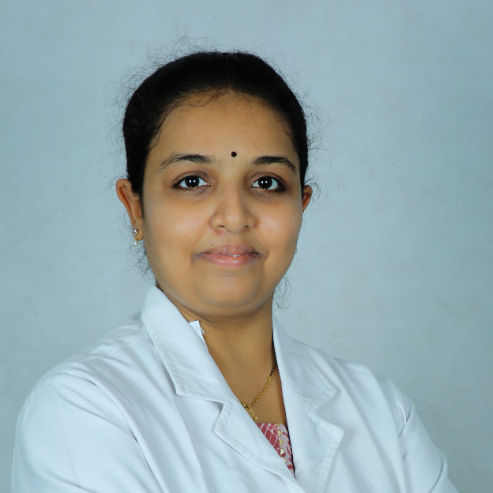
Dr. P Sravani
Pulmonology Respiratory Medicine Specialist
3 Years • MBBS, MD
Visakhapatnam
Apollo Clinic Vizag, Visakhapatnam

Dr Rakesh Bilagi
Pulmonology Respiratory Medicine Specialist
10 Years • MBBS MD PULMONOLOGIST
Bengaluru
Apollo Clinic, JP nagar, Bengaluru
Consult Top Specialists

Santoshkumar P Hammigi
Pulmonology Respiratory Medicine Specialist
4 Years • MBBS,MD, (Respiratory Medicine)
Bengaluru
Apollo Medical Center, Marathahalli, Bengaluru
(25+ Patients)

Dr. Hyder
Pulmonology Respiratory Medicine Specialist
5 Years • MBBS, MD (PULMONOLOGY)
Guntur
Kalam chest and multi-speciality clinic, Guntur

Dr. Mahavir Bagrecha
Pulmonology Respiratory Medicine Specialist
14 Years • MBBS, MD (PULMONOLOGY)
Pune
Swash Chest and Diabetes Clinic, Pune
(50+ Patients)

Dr. P Sravani
Pulmonology Respiratory Medicine Specialist
3 Years • MBBS, MD
Visakhapatnam
Apollo Clinic Vizag, Visakhapatnam

Dr Rakesh Bilagi
Pulmonology Respiratory Medicine Specialist
10 Years • MBBS MD PULMONOLOGIST
Bengaluru
Apollo Clinic, JP nagar, Bengaluru
More articles from Lung Cancer
Frequently Asked Questions
1) What are early signs of lung cancer in nonsmokers?
Persistent cough, breathlessness, chest pain, and unexplained weight loss can occur even in nonsmokers. Radon exposure and pollution are important risks. If symptoms last more than two weeks, seek evaluation.
2) Who qualifies for low-dose CT lung screening?
Adults 50–80 years with at least a 20 pack-year smoking history who currently smoke or quit within 15 years should get annual LDCT. Discuss eligibility with your clinician.
3) Can a blood test diagnose lung cancer?
No. Routine blood tests support care but cannot diagnose lung cancer. A biopsy is needed for confirmation and biomarker testing, though liquid biopsy may help find mutations when tissue is scarce.
4) How is stage 1 lung cancer treated?
Often with surgery (lobectomy or segmentectomy). If surgery is not an option, SBRT can be curative. Some patients may receive adjuvant targeted therapy or immunotherapy based on biomarkers.
5) What’s the difference between small cell and non-small cell lung cancer?
SCLC grows and spreads faster and is commonly treated with chemotherapy and immunotherapy; NSCLC is more common and often treated based on stage and biomarkers, including targeted therapies.
